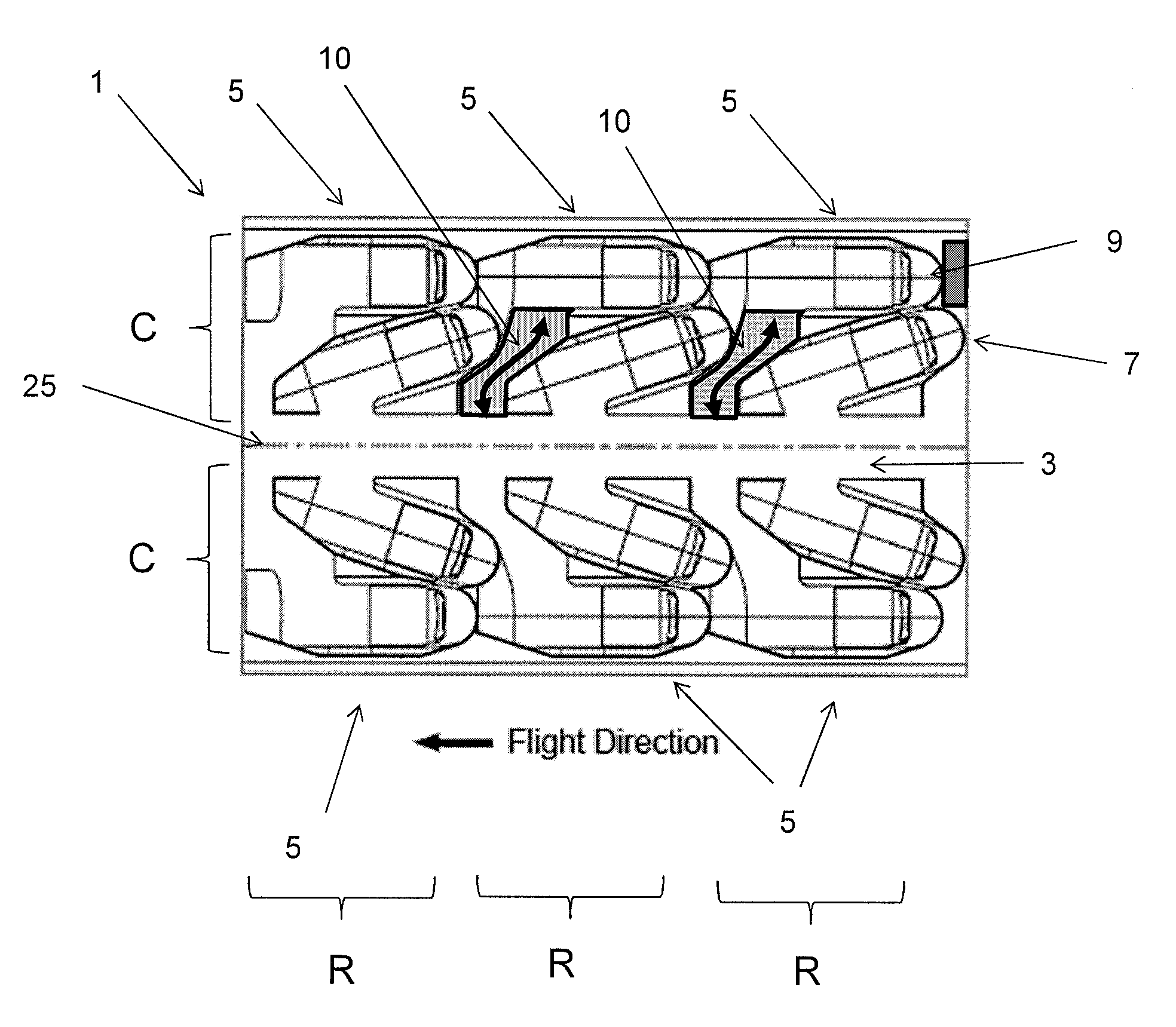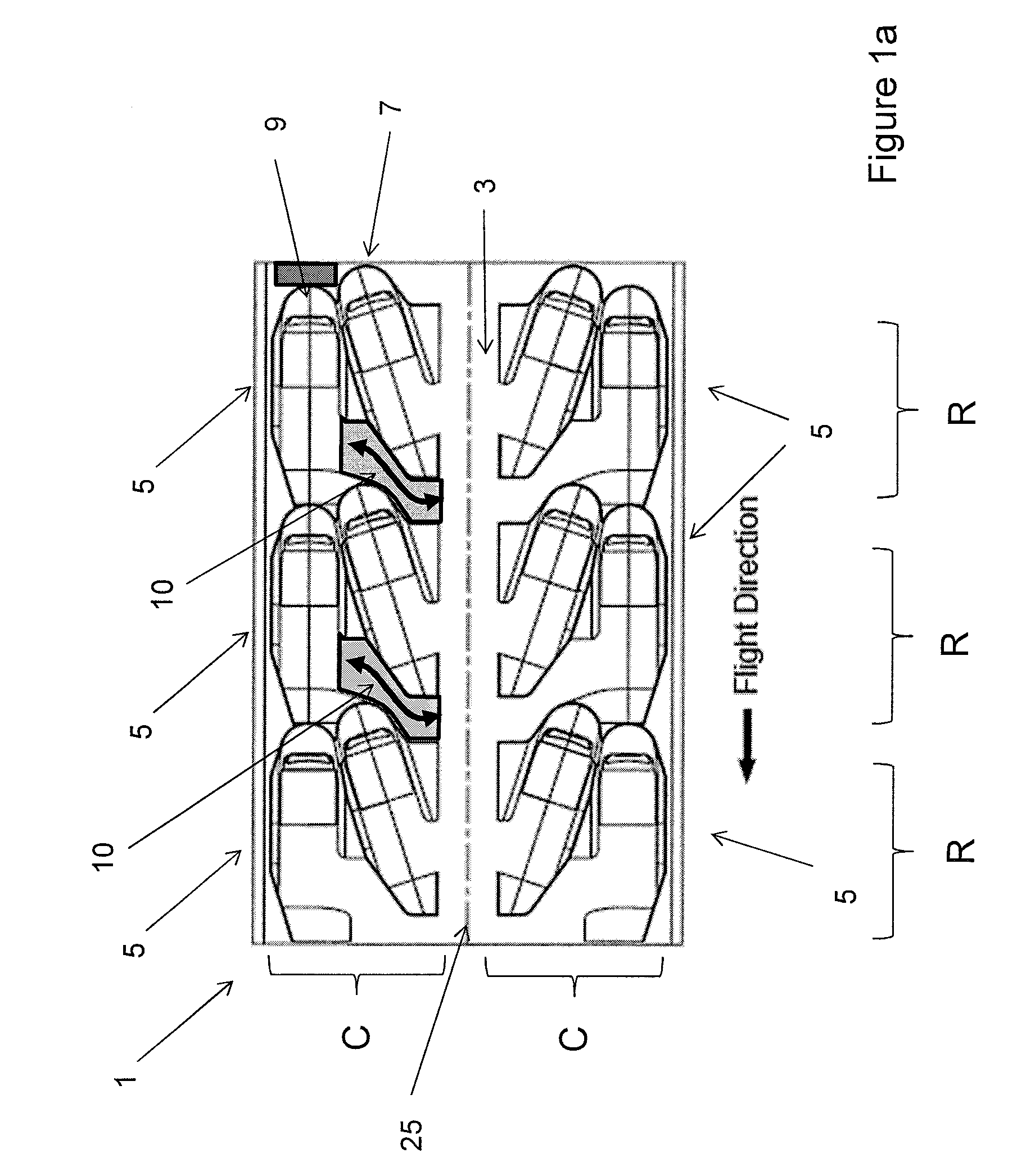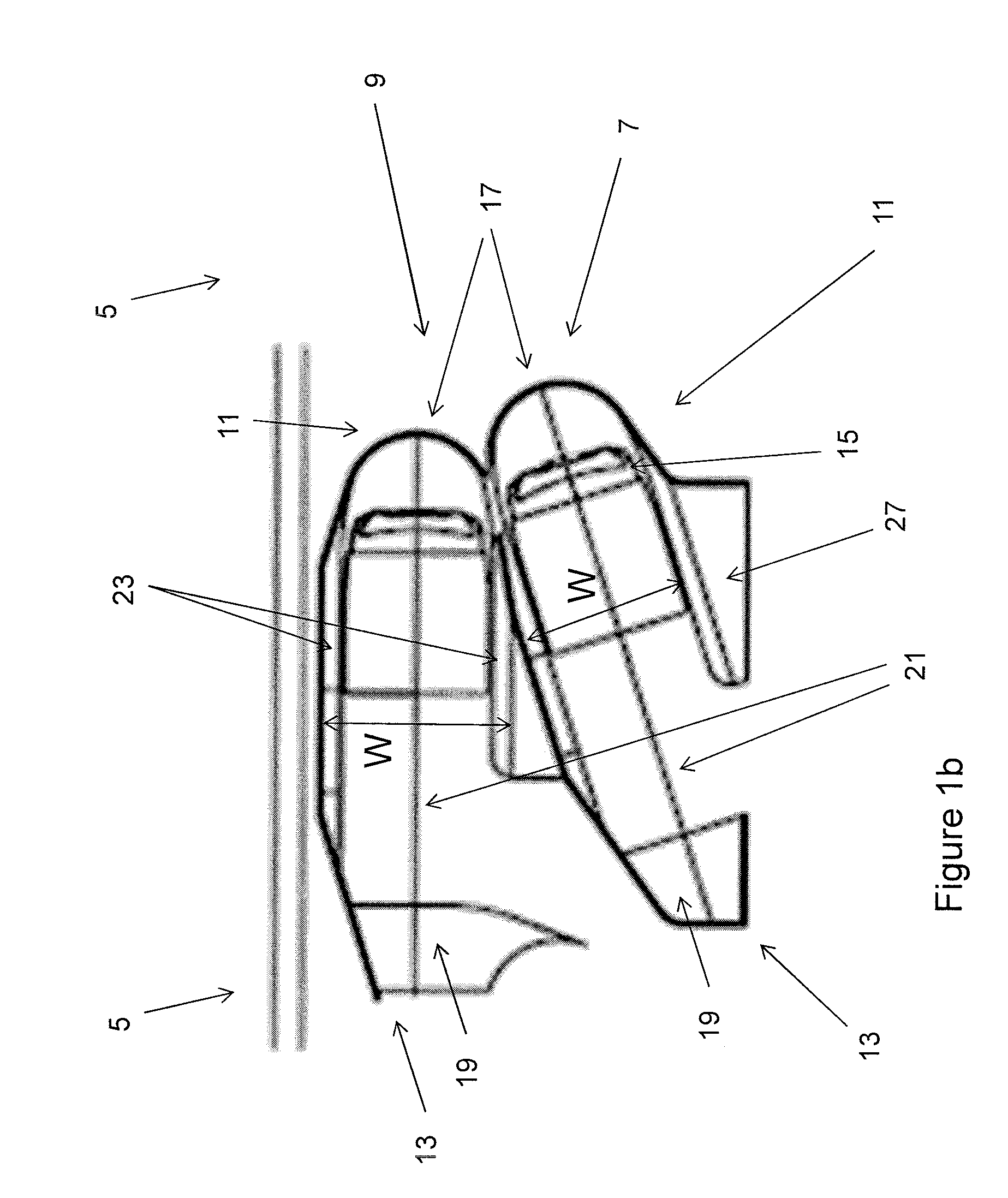Aircraft passenger seating arrangement
a seating arrangement and passenger technology, applied in the field of aircraft passenger seating arrangement, can solve the problems of reducing packing efficiency, affecting privacy and personal space, and affording relatively low privacy levels, so as to achieve efficient packing and minimise the amount of “dead space” between seat units in each row
- Summary
- Abstract
- Description
- Claims
- Application Information
AI Technical Summary
Benefits of technology
Problems solved by technology
Method used
Image
Examples
first embodiment
[0085]In the invention the aisle-seat units 7 are angled at 18 degrees to the longitudinal axis 21 of the non-aisle-seat 9. Since the non-aisle-seat units are also parallel to the longitudinal axis 25 of the cabin, the aisle-seat units are also angled at 18 degrees to this cabin axis. Such an orientation has been found to be sufficient to provide above-mentioned advantages of the invention but does not require the aisle-seat unit to meet the crashworthiness criteria of seats angled above 18 degrees.
[0086]In the first embodiment of the invention, the seat units 7, 9 are all forward facing and angled outwardly with respect to the longitudinal axis 21 of the non-aisle-seat units 9; the head-receiving ends 11 of the seat units 7, 9 in each pair 5 are proximal to one another, and the foot-receiving ends 13 of the seat units 7, 9 in each pair 5 are distal from one another. The ottoman 19 and a side table 27 of each aisle-seat unit 7 therefore border the aisle 3. The ottoman 19 and table 2...
second embodiment
[0088]Firstly, the seating arrangement of the second embodiment is a 2-4-2 arrangement in which a central column C having a width of four seat units 7, 9 (two pairs of seat units 5) extends along the longitudinal axis of the cabin 1, with aisles 3 extending either side thereof. Each row R of the central column C comprises two, inner, seat units 9 forming the non-aisle-seat units 9 of each pair 5 and two outer aisle-seat units 7 having longitudinal axes 21 angled relative to the longitudinal axis 21 of the non-aisle-seat units 9 (see FIG. 2b) such that a passenger access path 10 to the non-aisle-seat unit 9 is provided. In FIG. 1a and subsequent Figures, a passenger access path 10 is, for the sake of clarity, typically only labelled for one of the pairs of seat units. It will be appreciated however, that a passenger access path is, in fact, provided in the corresponding gap between aisle-seat units in the other pairs of seat units shown.
[0089]The seat units 7, 9 are of a different st...
fourth embodiment
[0091]FIG. 4a shows the invention in which the seat units 7, 9 are arranged in a 2-2-2 formation. The pairs of seat units 5 in the central column C are identical in structure to those on the right-hand side of the cabin. Although the seat units in each row R of the central column of seat units are accessible from the surrounding aisles 3 (reducing the need for the passenger access path), it is advantageous to provide pair of seat units 5 in accordance with the invention because of the relatively high seat packing density provided (see above), and to ensure uniform seating within the cabin 1.
[0092]FIG. 4b shows a variant of the fourth embodiment of the invention in which the seat units 7, 9 are arranged in a 2-3-2 formation. The pairs of seat units 5 in the central column C are the same as those in FIG. 4a except that adjacent to the non-aisle-seat unit, a further seat unit is also fitted. The central non-aisle-seat unit in the central column is accessible from the upper aisle 3 via ...
PUM
 Login to View More
Login to View More Abstract
Description
Claims
Application Information
 Login to View More
Login to View More - R&D
- Intellectual Property
- Life Sciences
- Materials
- Tech Scout
- Unparalleled Data Quality
- Higher Quality Content
- 60% Fewer Hallucinations
Browse by: Latest US Patents, China's latest patents, Technical Efficacy Thesaurus, Application Domain, Technology Topic, Popular Technical Reports.
© 2025 PatSnap. All rights reserved.Legal|Privacy policy|Modern Slavery Act Transparency Statement|Sitemap|About US| Contact US: help@patsnap.com



